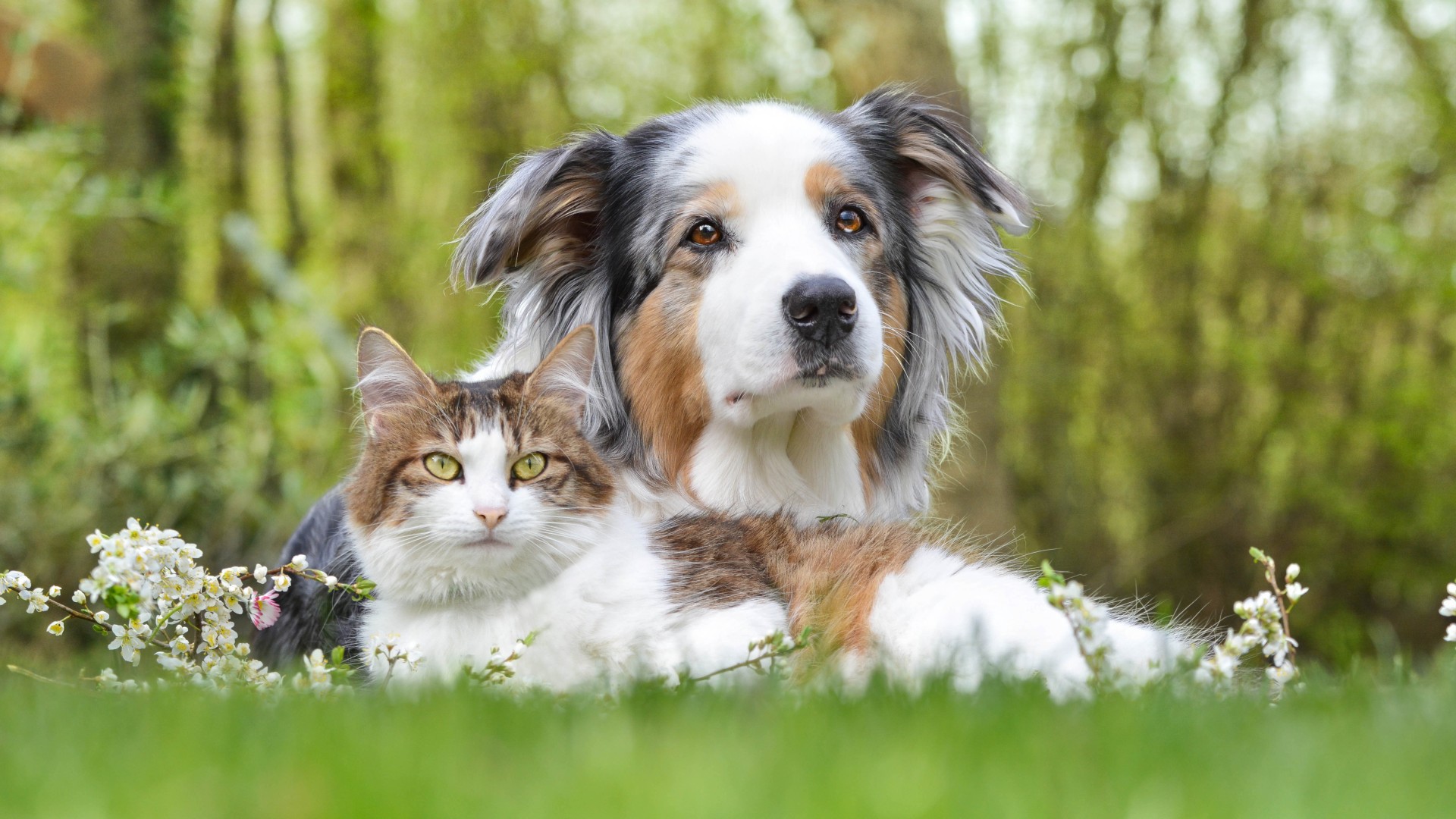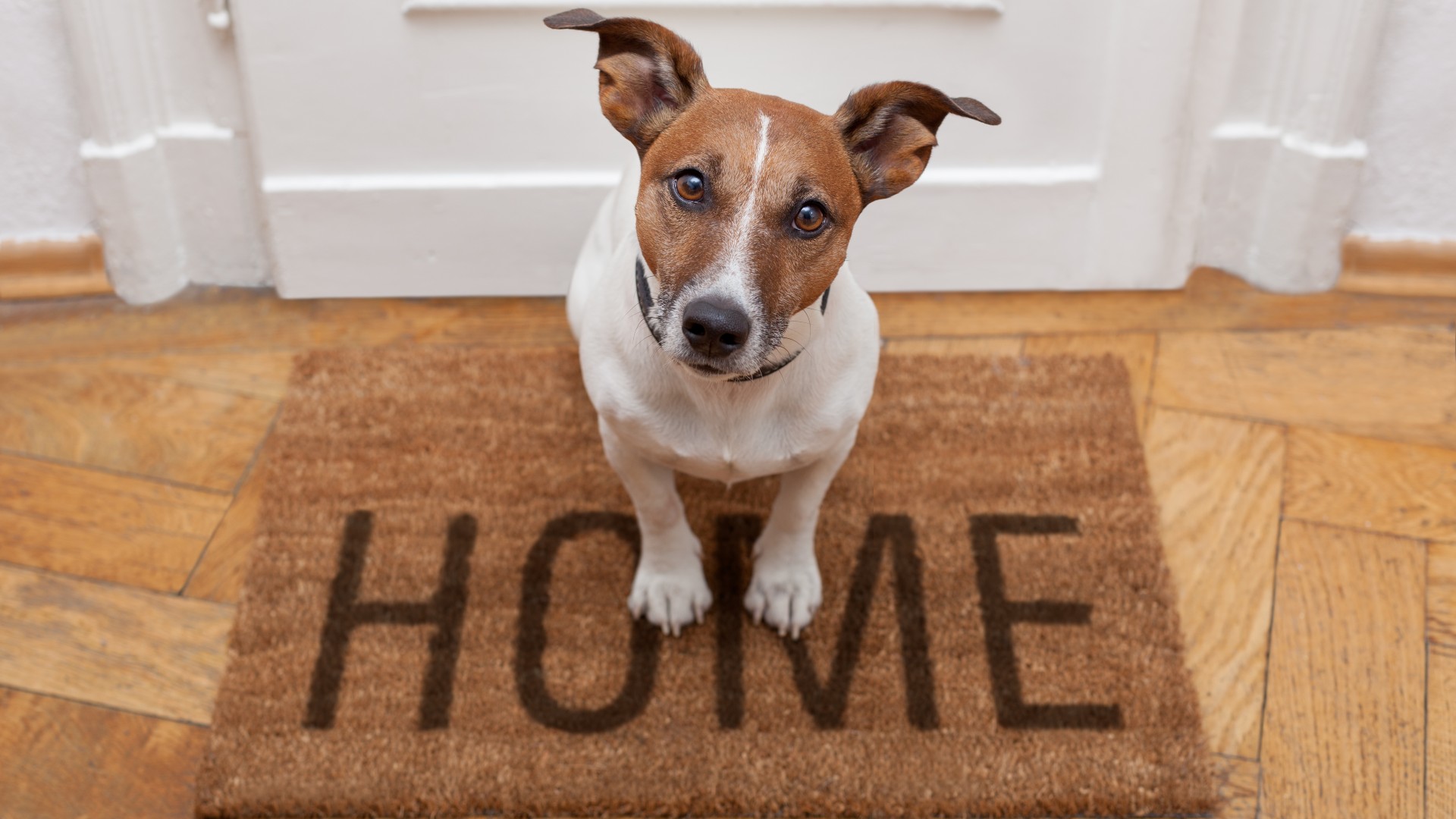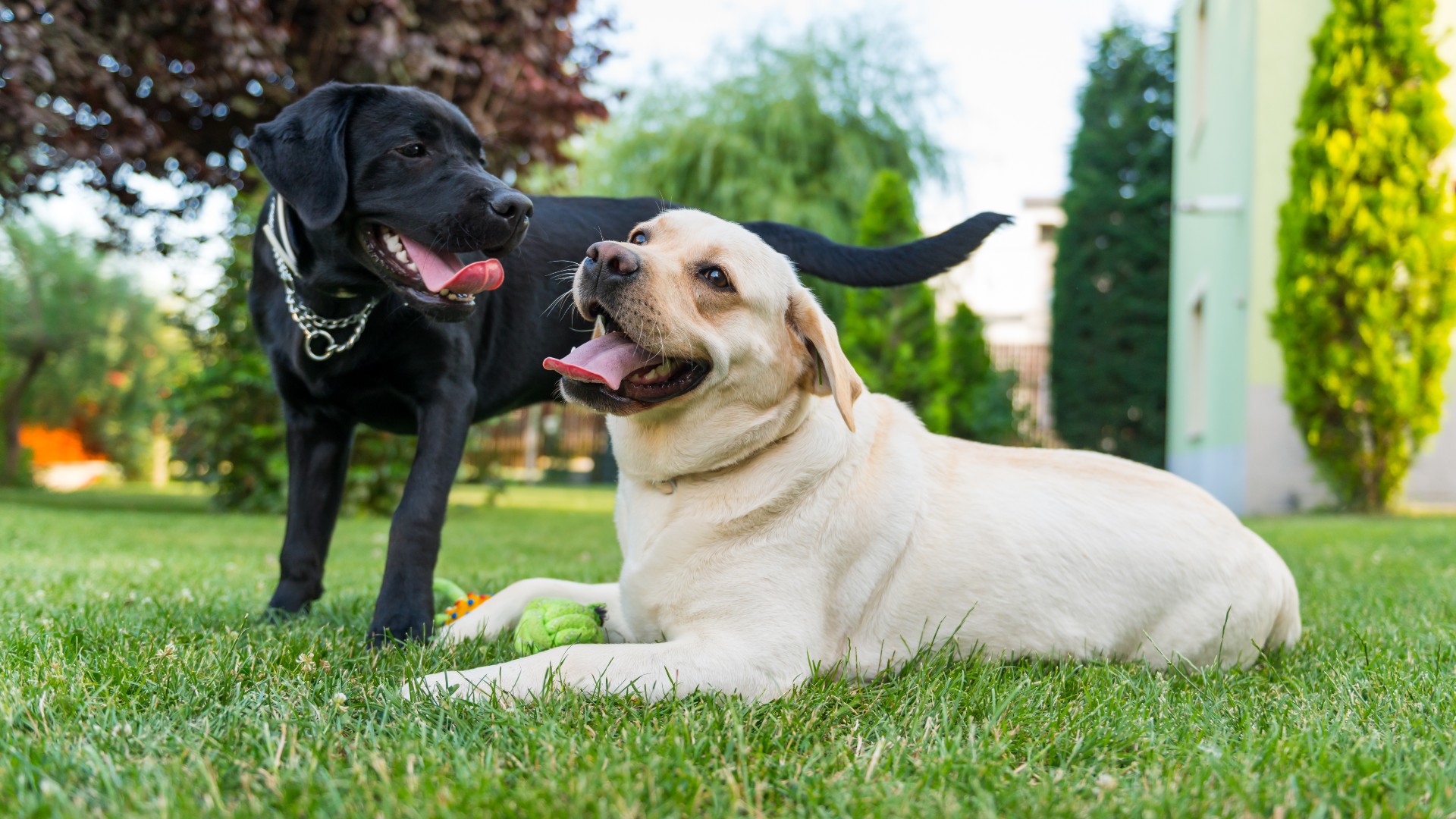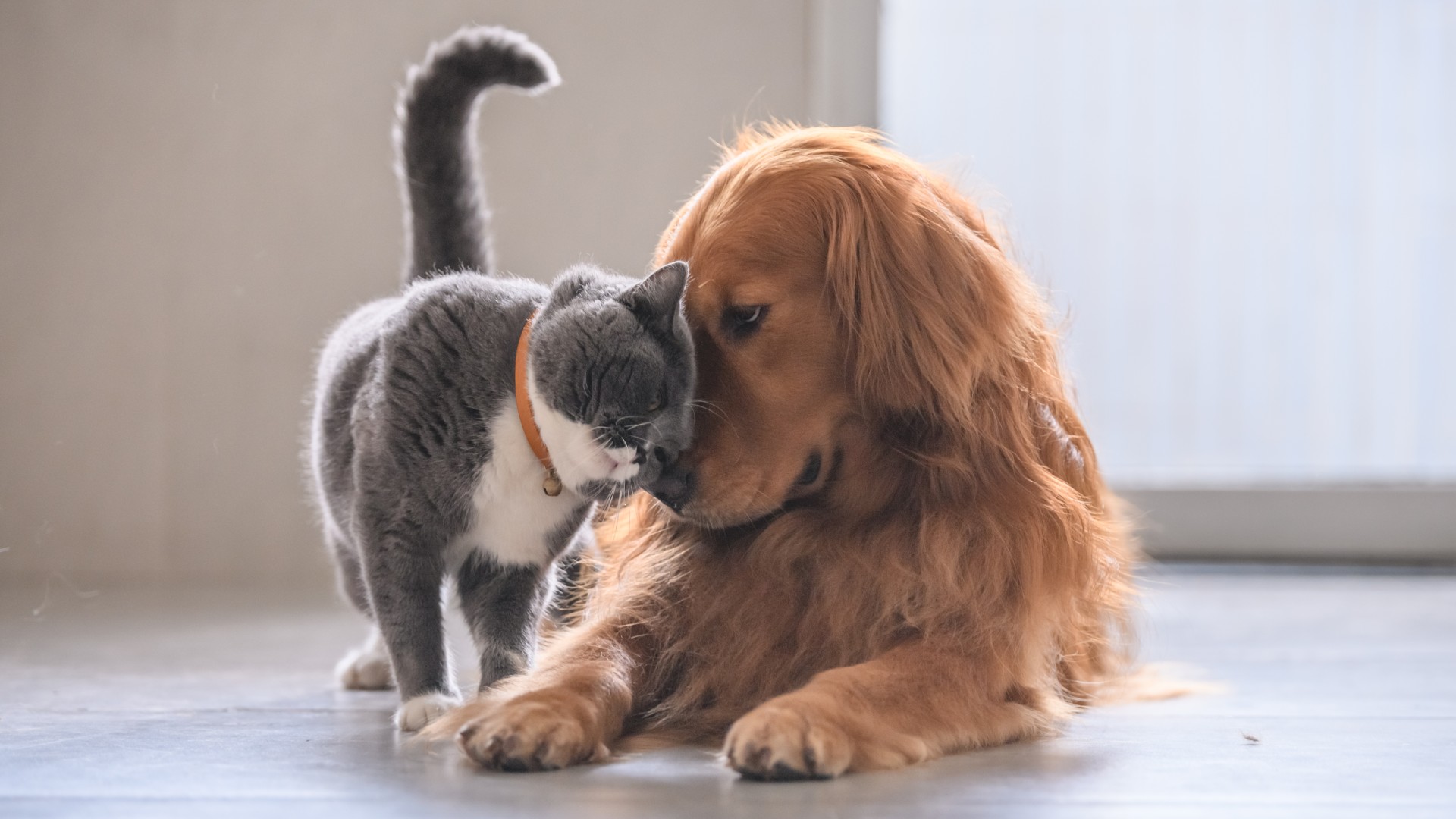How to introduce a new dog to your home and other pets
Trying to figure out how to introduce a new dog to your home and fellow fur family members? Our step-by-step process has got you covered

Curious as to how to introduce a new dog to your home and other pets in the smoothest way possible? You’ve come to the right place. While investing in the best dog food, toys and bed are an important part of preparing for your dog’s arrival, it’s important not to underestimate just how vital it is to plan out how you’re going to help your canine companion to adjust to their new environment.
While welcoming a new fur friend into your family is hugely exciting, throwing open the door to your home and letting them bound in without any forward planning is a recipe for disaster. In order to ensure the safety of other pets in your home and to make life easier for yourself going forward, it’s key that you establish boundaries, limitations and house rules from the moment you arrive home.
Whether you’re bringing home a puppy for the first time or you’ve just adopted a senior dog from a shelter, think of your new pet as being similar to a small child. Although setting and enforcing boundaries from the first day can feel harsh, knowing what’s expected of them will help your dog to feel safe and secure.
And it’s not just the newest addition to your family you need to consider. While getting them used to their new home in a slow and steady way that prevents overwhelm is important for their wellbeing, you’ll also want to consider your other pets, who may be feeling just as nervous and apprehensive about this change in their living situation.
To help make the whole process go as smoothly as possible, we’ve put together this handy guide for you. Below, you’ll find everything you need to know to not only help your dog settle into their new home but to help give all your pets the best chance of success when it comes to those initial interactions.
- How to crate train a dog: A vet’s guide
- How to reduce separation anxiety in dogs: A vet's guide
- Dog won’t stop barking? Causes and how to stop excessive barking
How to introduce a new dog to your home

If you’ve ever found yourself in an unfamiliar environment with people you don’t know, then you can likely relate to how your dog might feel when you bring them home for the first time.
New situations can be unsettling for all of us, whether we’re off the human or fur kind, but with a little advance thought, you can ensure that your dog’s first few days in their new home goes well for both of you.
1. Adopt a calm manner
The first thing you want to do is to try to be as calm as possible. Anxiety in dogs is not uncommon when their environment changes and you being relaxed and not overly worried or hypervigilant will greatly help to reduce these feelings.
As strange as it may sound, this also means to temper your excitement and enthusiasm, both of which can actually make your dog feel overwhelmed. There’ll be plenty of time down the line for you to greet your dog with lots of attention and affection, but for now, keep things calm.
2. Take your dog on a walk first
If you’ve already invested in one of the best dog harnesses, now would be the time to put your dog in it and attach their leash. While it can be tempting to want to take them straight into your home, we recommend you walk them first to help burn off some of the excess nervous energy that can accumulate when dog’s sense that things are changing.
Go for a good walk around your neighborhood to help your dog return to a calm state. As an added bonus, this will also help to get your dog used to their wider surroundings and allow them time to adjust to the wide range of new sights, smells and sounds.
3. Slowly give them a tour of their new home
When it comes to showing your pup around their new living environment, slow and steady is the key. Make sure that when you come back from your walk, you enter the house first and then invite your dog in. This is important for establishing you as being at the top of the pack.
Once you’re both inside, keep your dog on their leash and begin to walk them through each room, entering each room before your dog does to consistently reinforce your leadership. Be sure to keep your dog by your side the whole time to stop them from wandering around.
4. Avoid touching or talking to your dog
Because these first few moments in their new home can be very overwhelming, it’s important you don’t add to the stimulation by touching your dog or making eye contact with them. It’s also best to avoid talking, except to make simple sounds to communicate something you want them to do or to correct unwanted behavior.
5. Offer a reward
Once you’ve completed the tour of the house, show your dog the area where their food and water will be kept. As a reward for moving from room to room with you, now can be a good time to offer a few of the best dog treats to help keep your fur friend motivated and on track.
6. Introduce them to their sleeping spot
Next up, spend some time getting your canine companion used to their special sleeping spot. This is now a good time to take your dog off their leash as this communicates to them that this place is theirs and that they can comfortably settle here.
If you’ve purchased the best dog bed or a dog crate, let your pup sniff it all out and relax for a bit. Don’t be surprised or concerned if your new fur baby decides to immediately curl up and go to sleep. This is normal behavior and signals that they’ve found a place in the home to call their own.
How to introduce a new dog to your existing dog

If you have another dog in your family, then chances are the first thing on your to-do list after getting your new dog settled into the house is going to be introducing your fur friends to each other.
It’s normal to feel nervous about this, but the below steps will help make a lifetime doggy friendship all the more possible.
1. Find a neutral spot to make the introduction
As you probably already know, dogs can be territorial and it’s normal that your existing pup may feel the need to protect both you and your home from this potential threat that’s entered their environment. So, to help ensure the introductions run smoothly, choose a neutral location.
You want to pick an area that neither dog has claimed as their own, so that rules out your home and your backyard, both of which have the potential to be tricky for a first meeting. Instead, head for the park during off-peak hours or to the home of a friend who doesn’t have any pets or children - a quiet spot is key for this.
You’ll also want to remove any other items that could potentially cause a scuffle, so at this point, do not take any toys or other comfort items with you that the pair could fight over. We also recommend keeping both dogs on lead so that you have control over the situation.
2. Watch their body language
During that first interaction, pay close attention to the type of dog body language each pup is displaying. Are they wagging their tails? Are their bodies relaxed? Do they look visibly comfortable? These are all great signs that your dogs are feeling happy around each other.
On the other hand, hard stares, tense posture, freezing on the spot, and keeping their tail lowered or tucked are all signs that they’re finding the interaction stressful. If this is the case, don’t try to force your dogs to engage - it may be that they simply need more time to get used to each other or that a professional trainer may be required to help the pups adjust to one another.
3. Take your dogs on a walk together
If the first meeting between your two dogs goes well, taking them for a joint walk can be a great way to continue to get them used to being around each other and to build on the bond that has started to form.
You’ll want to keep them both on a lead for this and to parallel walk them, with you walking one dog and a family member or friend walking the other. This means they can easily see each other but there’s also a buffer in place to keep things feeling comfortable.
Once you’ve seen that both dogs are enjoying their walk and seem relaxed in each other's presence, you can slowly close the gap while continuing to parallel walk. Avoid letting them come face to face with each other while they’re on their leads as this position has the potential to cause stress and confrontation.
4. Let them interact off leash
Was the walk a success? Great! If that’s the case and there were no issues, you can start letting the dogs interact off leash in a controlled environment. Take them into an enclosed backyard and drop the leads, giving the dogs a chance to interact with each other freely. Be sure to offer lots of verbal praise if they’re doing well.
5. Monitor mealtimes
Food aggression in dogs can occur during the first few weeks of dogs living together due to feelings of fear and anxiety, so it’s a good idea to separate them at mealtimes until each pup learns that the other isn’t a threat when it comes to their ability to get enough food.
Separating them could mean placing each dog in a different area of the house or it could simply involve using a baby gate to create a divider while they’re both eating. Do not bring them back together again until each dog has finished their meal and the bowls have been removed.
6. Ensure each dog has their own special space
It’s really important that each dog has their own signature space that they can retreat to if they’re feeling overwhelmed or in need of some alone time. A crate or dog bed positioned in a particular part of the room can be a great way of preventing possessiveness over sleep spots.
7. Separate them when you’re not around
While your dogs may get along okay when you’re around, that doesn’t necessarily mean they’ll play nicely when you’re not, so be sure to keep them apart when you’re not there to supervise them. Dog crates are a great way to do this as not only will keeping them in their own secure area ensure they each stay safe, it will give them a break from one another and some time to relax on their own.
How to introduce a new dog to your cat

Let’s be honest - those of us that own a feline friend know that these independent balls of fluff aren’t always the easiest little creatures to win over, especially where dogs are concerned. But, believe it or not, it’s actually quite possible for dogs and cats to learn to live together peacefully. In fact, some go on to form incredibly strong bonds that are a joy to behold.
To help your canine companion and feline fur ball get along as well as possible, here’s some tips to help you navigate those first few days of living under the same roof.
1. Keep your pets separate to begin with
When meeting for the first time, cats and dogs require a much slower pace than two dogs or two cats might need, so patience is going to be the key to success here. You’ll want to keep your new dog and resident cat separate for at least the first three days, ensuring they do not come into contact with each other.
You may be wondering how on earth your two fur babies are going to get used to each other's presence if they’re in separate rooms, but, rest assured that even though they can’t see each other, they can smell and hear one another, which is a good start.
2. Feed them on opposite sides of a closed door
Next up, move them closer but still keep them separate. A great way to do this is to feed them on opposite sides of the same closed door with their bowls several feet from the door. Once again, they’ll be able to hear and smell the other and over the course of several meals you can move the bowls closer to the door until each pet is able to eat calmly with the knowledge that the other one is close by.
3. Teach your dog important commands
The first meeting between your dog and cat will go a lot more smoothly if your dog has already mastered basic commands that you can deploy should the need arise. After all, the last thing your feline friend probably wants is an enthusiastic pup pawing at her in an attempt to become immediate best buddies. Teach your dog ‘sit’ and ‘down’ so that you have control over the interaction and can reign them in if necessary.
4. Slowly begin the introduction process
When you feel your dog and cat are ready for a face-to-face meet and greet, choose an area of the house that neither views as ‘theirs’ as this will prevent either one becoming protective or aggressive.
Keep your dog on their lead and let your cat come and go. Ensure you don’t hold either of them as this has the potential to result in injury to either you or them if one of the pets becomes unsettled or spooked.
Have a few of the best cat treats and dog treats on hand to reward each of your pets if they behave well during the first interaction. Training dogs with treats (and cats too) is a great way to encourage more of the behavior you'd like to see. Keep things short and return each to a separate room afterwards.
5. Have supervised daily interaction sessions
You’ll want to repeat the above step several days in a row, making sure you are present for each interaction between your fur babies. Continue to use food and verbal praise as a reward and end each session before either animal shows signs of stress.
6. Allow your pets loose together
If things have gone well up until this point, you can start to let your pets interact more closely. Keep your dog’s lead attached as this will enable you to quickly step on it or pick it up should they start getting over excited and want more contact than your cat is comfortable with.
Monitor your pets closely over the coming days to be sure they’re adjusting to living together. If tension should arise at any time, you can repeat the above process to give each animal more time to adjust. Be sure to continue to separate your dog and cat when you’re not around.
PetsRadar Newsletter
Get the best advice, tips and top tech for your beloved Pets

Kathryn is a freelance writer who has been a member of the PetsRadar family since it launched in 2020. Highly experienced in her field, she's driven by a desire to provide pet parents with accurate, timely, and informative content that enables them to provide their fur friends with everything they need to thrive. Kathryn works closely with vets and trainers to ensure all articles offer the most up-to-date information across a range of pet-related fields, from insights into health and behavior issues to tips on products and training. When she’s not busy crafting the perfect sentence for her features, buying guides and news pieces, she can be found hanging out with her family (which includes one super sassy cat), drinking copious amounts of Jasmine tea and reading all the books.
